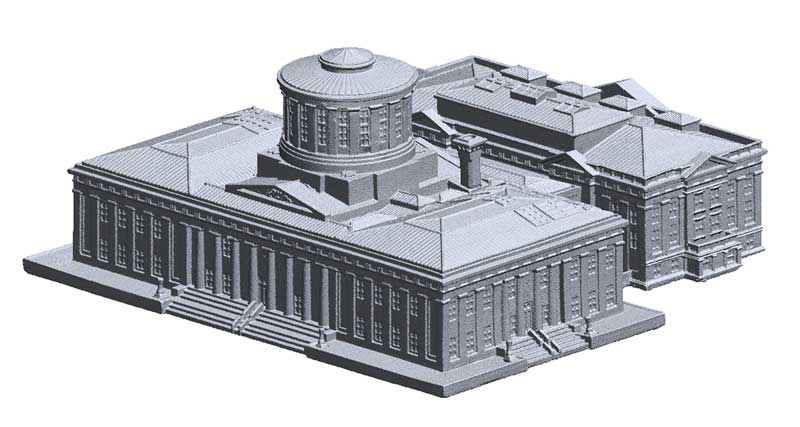

Exact Metrology: A Division of In-Place Machining Company and a comprehensive 3D metrology service provider and hardware sales company, recently used CT (Computed Tomography) to assist a former Ohio State University student with a special project.
Caroline Karbowski, a Biology major as well as an undergraduate student researcher in Molecular Biology, started her own company called See3D. A nonprofit organization, See3D helps the blind and visually impaired to see through touch using 3D printing to create models. They then distribute them to those in need.
Since 2017, See3D has distributed over 1,400 models to people in 23 states, 9 countries and 23 organizations. Ms. Karbowski taught herself Braille in 6th grade because she wanted to “read books in the car without getting dizzy.” From there, her interest grew and she discovered that she could add Braille labels to 3D printed models. Blind students could make their own scientific observations instead of only relying on someone else’s observations.
See3D contacted Exact Metrology wanting to take a particular physical part and convert it into a digital model, a service the company can provide rapidly with multiple methods of data capture and full-time staff for modeling and reverse engineering. The nonprofit had access to a scale model of the Ohio State House. The model is presumably a one-off model made by an artist. The challenge consisted in modeling the minute details and features of the state house into a printable format. An accurate point cloud was required. The geometry of the part and small features made industrial CT scanning the ideal choice for data capture.
The scan was completed by an Exact Metrology applications engineer, with a ZEISS METROTOM 6 scout (GOM CT). Using an x-ray generating source and a digital detector, an image showing the difference in density was created. Thousands of images were taken automatically. When a sufficient number of images were captured, they were stitched together to create a 3D x-ray image or volume. The volume can then be surfaced into a model by the gray value difference between materials in the volume. In this case, an outer shell featuring a core and a base. It was noted by the applications engineer, that when a point cloud was generated of the Ohio State House, it had too many points to be feasibly processed into a printable format. Exact Metrology’s in-house reverse engineering team removed the unnecessary data points while maintaining accuracy to provide a printable digital model of the state house. Commenting the experience the engineer said, “I enjoyed this job because it was an interesting, unique part with the added bonus of helping See3D provide a valuable service.”
Last year, Caroline was selected as the Next Generation Innovator of the Year by her university. To hear her talk more about See3D and the inspiration behind it click HERE.
To learn more about the capabilities of our GOM CT scanner, visit CT SCANNING and be sure to Contact Us to discuss how CT scanning can benefit your inspection processes.





